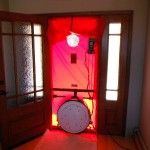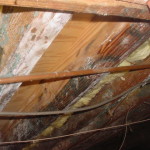Indoor Air Quality: Test it and Improve it
 Considering the amount of time we spend in our homes, and that we are generally breathing the whole time, it’s a good idea to ensure that our air is clean and healthy. There are a number of factors that can affect indoor air quality, some of which are urgent health concerns.
Considering the amount of time we spend in our homes, and that we are generally breathing the whole time, it’s a good idea to ensure that our air is clean and healthy. There are a number of factors that can affect indoor air quality, some of which are urgent health concerns.
The first step in improving your indoor air quality is to have an energy assessment done. During this process, a technician will be testing your duct leakage, building leakage and taking a look at your ventilation systems. These basic functions of your home are often poorly installed and are essential for good overall air quality, as they are part of the solution to any contamination issue.
Carbon Monoxide is the most dangerous contaminant. It’s colorless and odorless, so it’s undetectable without testing equipment. High levels of carbon monoxide can lead to nausea, unconsciousness, and death. Common sources are space heaters using fossil fuels (such as natural gas), defective combustion appliances such as central furnaces and water heaters, improper ventilation, automobile exhaust and tobacco smoke. In this case, we are most concerned with combustion appliances (furnaces, gas stoves, gas ovens, water heaters). A technician can test your appliances to ensure they are operating correctly, are producing acceptable amounts of carbon monoxide and are properly ventilated.
HVAC System & Filters: There are plenty of different kinds of filters out there. One doesn’t need to buy an expensive electrostatic filter to provide good filtration. A lot of that can be overkill and actually make the fan in your HVAC system work overtime, make a lot of noise and cost you more electricity. A simple, relatively cheap, 1″ or 2″ pleated filter will do just fine even if you suffer from allergies. Look for a good brand and one that comes highly rated. There are different ways in which they are rated, going all the way up to hospital standard filters. The general rule of thumb is to change your filter around every 3 months.
Attic and Crawlspace Air Infiltration: Homes, even now, are not built to be even close to air tight. The tested average in new and old homes is much higher than it can and should be. Crawlspace air (containing moisture, spores, fiberglass, dust, pollen, VOCs and rat waste) can easily infiltrate into the framing of the home and then into the living space from there. This can be solved, depending on the specific issue, by sealing up every possible spot where air can get into the home from the crawlspace and attic. Also, a thick 15 mil polyethylene plastic barrier called a “crawlspace vapor barrier” can be installed to prevent dust, pollen, moisture and rat waste laden air from infiltrating inside. Below are some photos that show areas in the crawlspace and attic where air commonly infiltrates:
[nggallery id=10]
 Water, believe it or not, can affect indoor air quality. Attics and crawlspaces with moisture issues will quickly grow mold (within 48 hours) and release allergenic spores into the air. This is an issue that will only continue to get worse as mold spreads and wood rots. To avoid further damage and a higher bill, it is best to take care of it right away. Water can come from several sources: a plumbing leak, condensation due to bad ventilation, or commonly from the soil itself. The best way to solve a moisture problem is to find the source. A technician will be able to find it, using infrared imagery, a visual assessment and digital moisture readings. Crawlspace vapor barriers (encapsulation) is a common and effective way to take care of moisture/high humidity problems. Bulk water should be first kept out of the crawlspace by use of french drains in appropriate locations and, if needed, sump pumps installed alongside the vapor barrier.
Water, believe it or not, can affect indoor air quality. Attics and crawlspaces with moisture issues will quickly grow mold (within 48 hours) and release allergenic spores into the air. This is an issue that will only continue to get worse as mold spreads and wood rots. To avoid further damage and a higher bill, it is best to take care of it right away. Water can come from several sources: a plumbing leak, condensation due to bad ventilation, or commonly from the soil itself. The best way to solve a moisture problem is to find the source. A technician will be able to find it, using infrared imagery, a visual assessment and digital moisture readings. Crawlspace vapor barriers (encapsulation) is a common and effective way to take care of moisture/high humidity problems. Bulk water should be first kept out of the crawlspace by use of french drains in appropriate locations and, if needed, sump pumps installed alongside the vapor barrier.
Radon gas can be a serious long term hazard. It is released by the radioactive decay of radium, found in rock formations beneath buildings or sometimes in building materials themselves. Radon exposure appears to be linked to lung cancer. Tests for radon emissions exist, but are not widely available. Most building materials are not tested before they are used. The best ways to mitigate chances of radon exposure are proper ventilation, sealing concrete floors and foundations, and installing a vapor barrier.
Asbestos, a material used for insulation in construction before 1972, is still found in many buildings. Fortunately, significant releases of airborne asbestos fibers do not occur unless the asbestos is disturbed. This can happen when drilling or cutting into walls or floors, for example, having work done on an asbestos duct system, and it is almost certain to happen when attempting to remove asbestos materials. Thus, a Home Performance contractor often subcontracts a professional asbestos abatement company to safely remove asbestos according to protocol, keep it from getting airborne and then dispose in accordance with EPA standards. A technician will easily spot asbestos and advise you on which course of action should be taken.
Ignoring the health issues for a second, asbestos wrapped ducts are old, leaky and poorly insulated by definition. An energy audit often shows that a replacement of the asbestos ducts with properly engineered, sealed and insulated ducts, is often one of the single most effective projects in terms of energy savings, comfort and air quality improvement.
Asbestos Photos:
[nggallery id=1]
Other pollutants: Many other factors can affect indoor air quality, most of which are unrelated to home energy improvements, and are mitigated by other means. Still, they are worth mentioning. Automobile exhaust and tobacco smoke are avoided by obvious means. VOCs (volatile organic compounds) are gases emitted from solid or liquid materials which may have adverse health effects. VOCs come from a wide variety of products, such as paint, cleaning supplies, pesticides, building materials, adhesives, and many others. To reduce exposure to VOCs, you may have to do some research. You simply have to know which products are dangerous, and avoid using them or having them in the home.
Ventilation Options: A leaky house often gets a good amount of fresh air. However, a large amount of the air infiltrating into the house is coming from the attic and crawlspace. This is not where you want your air coming from. If Air Sealing is done to reduce this a great deal, the case can arise (not often) where a home now needs more fresh air ventilation. Read more here about the types of ventilation.
[dropshadowbox align=”none” effect=”lifted-both” width=”640px” height=”” background_color=”#ffffff” border_width=”1″ border_color=”#dddddd” ]Contact: For more information about Indoor Air Quality, call (925) 363-4498 to speak to a technician or schedule an Energy Assessment. You can also e-mail: info@epbuilders.com[/dropshadowbox]

Very informative article! We just purchased our home and this post was really helpful for us. I felt like after I read it, I had a much better grasp on air quality and HVAC systems. Im still no expert, but at least I will know what I am talking about if I ever have to call an HVAC company 🙂 I also was wondering about at home air testers. Do they work? I found one here that I am considering purchasing: http://www.airpurely.com/